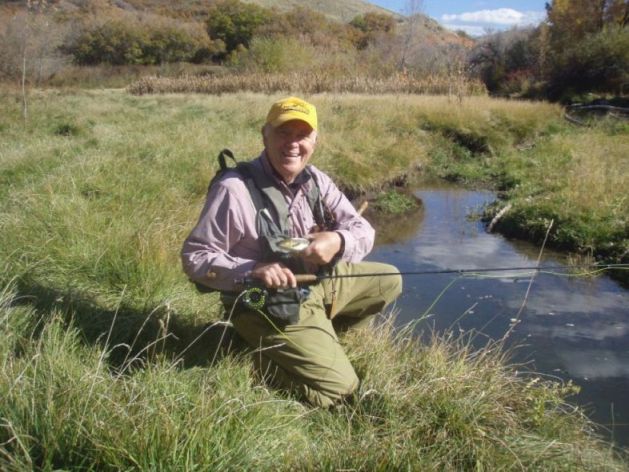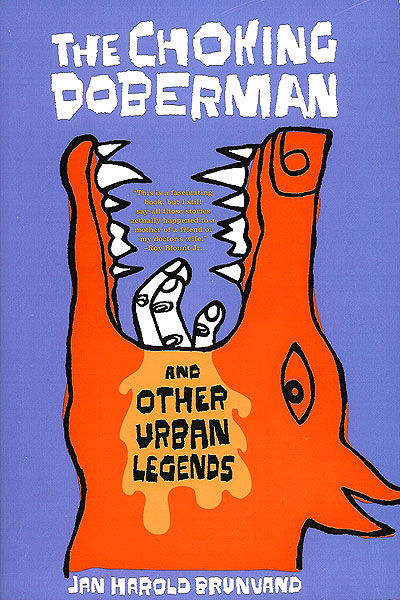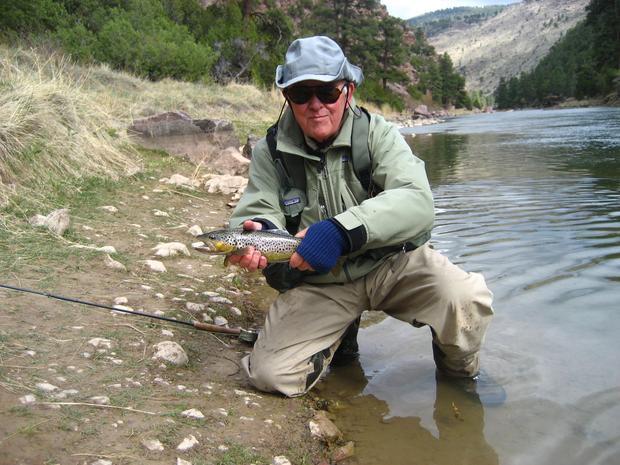
Jan Harold Brunvand enjoying the outdoor life.

Jan Harold Brunvand enjoying the outdoor life.
Sure you’ve heard of urban legends, but if you haven’t heard of their most distinguished champion, here is the good Professor’s website. As to the man himself, well, his accomplishments are exceeded only by his modesty and generosity of spirit, as you will see.
Alexander Baron: Thank you for agreeing to talk to us; I’ve been a fan of yours for over thirty years and actually bought two of your books. I was going to ask you how you got into urban legends in the first place but my first question may now seem a little tactless. Is it wise for an 80 year old to ski?
Jan Harold Brunvand: Yes. As a friend of mine, who is about ten years younger, has written on a T-shirt, “You don’t stop skiing because you are old, you get old because you stop skiing”. The fresh air, exercise, and interaction with younger people are all far better for an old guy than just sitting on the couch watching TV. Besides, I get senior discounts now, including a few resorts where I can actually ski for free. Modern gear: shaped skis, well-engineered bindings, comfortable boots, light but warm clothing, etc, all make it a very safe and pleasant sport. There are more super senior skiers than you might expect nowadays. I know of a man age 99 in Colorado who still skis and hunts elk.
I met another senior a few years ago who had written on his helmet, “Cheat the nursing home; die on your skis”. When I took his photo, he said he wanted to add, ̶but not today!”
AB: I came across three urban legends for sure in my youth; one was the exploding toilet joke which is now no longer a joke; another was about the guy who stands on a stool, slips and yanks out his finger when his ring is caught by a wall hook; the third is the one about the contact lenses and the welder. That is why I have never worn either rings or contact lenses even though I learned the truth about the stories decades ago, but having said that, do you believe these last two specifically – about the ring and the contact lenses – ever had any basis in fact?
JHB: The fused contacts story is completely bogus, as far as scientific possibilities go. I understand, though, that rings can indeed be dangerous in certain work environments. The first urban legend I can remember hearing as a kid was “The Death Car”. I was brought up in Lansing, Michigan, where Oldsmobiles were made, and we were all pretty car crazy. After the war when cars began to be made again in the factories that had produced tanks and army trucks for the duration, the cheap car story started to circulate. I did not learn that it was an “urban belief tale”, as my first folklore professor called it, until I got to college (Michigan State University in the early 1950s).

The book that started it all. The Choking Doberman was not the first book published on urban legends, but it is arguably the most influential.
AB: There is a widely held belief in some circles that there are plans afoot to afix microchips in the backs of our necks and link us all to a global computer. Ludicrous though that sounds, we are now seeing the emergence of total surveillance. My question is, do these and similar ideas come from the world of fiction or science fiction and are then picked up by politicians, scientists, etc, and how do we stop this?
JHB: Logging our phone calls or emails is a far cry from installing chips in our bodies. I agree that surveillance seems to have got out of hand post 9/11, but the politicos probably got their ideas without reference to fiction or legends. My feeling is that most of this mass of data will never be used.
AB: Can I ask how many urban legends have come true after the event, and why you think this is?
JHB: I don’t think many legends “come true” except for instances where pranksters enact them by, for example, putting a mouse in a soda or microwaving a hapless pet. It has happened. More interesting to me are the few--very few--real occurrences that generate legends. “The Unsolvable Math Problem” is my favorite example of this.

Jan Harold Brunvand with another fine catch, but nowhere near as big as the one that got away.
AB: Of all the countless ones you have collected, which in your view is the most bizarre?
JHB: Hard to say, but I think I would nominate “The Bullet Baby”. It started as a hoax in a medical journal of the US Civil War days and became accepted as fact for a long time until debunked and recognized as a hoax. The evidence was pretty clear, but most people missed it.
AB: It is widely acknowledged that many myths are universal, eg the Great Flood. Can you make such a generalisation about most urban legends? Obviously those relating to cars in the 20th Century don’t apply to Amazon forest dwellers, but there are earlier versions of these, aren’t there?
JHB: I’m not a fan of theories of universal themes or origins in urban legends. Creation myths and the like are another matter entirely. While it’s hard to prove, and only worth discussing in terms of specific legends, I think most urban legends had a single origin somewhere, sometime and then diffused to the other places where told. Seldom, however, can you discover the origin.
AB: You laughed when I called Patricia Turner one of your acolytes, but she gives you a credit in her groundbreaking book I Heard It Through The Grapevine, clearly she stood on the shoulders of a giant. Without you, most of the public would not have heard of urban legends.
JHB: It’s true that my popular books spread the word beyond academe, but lots of other folklorists have studied urban legends, publishing their findings in scholarly books, journals or conference papers. Pat was surely much more influenced in her career by the first professor she names in her introduction, the late great Alan Dundes of UC Berkeley. She also mentions Bengt af Klintberg, a Swedish folklorist who had been a guest lecturer in Dundes’ classes when Pat was there. Bengt is so well known in his own country for urban legends writings that the official term for them in Sweden is “Klintbergers”. To be honest, I should acknowledge that some American folklorists look askance at my popularizing of the subject. But it resulted in massive input from readers that helped to define the extent of the subject, and, as Liberace used to say about his critics, “I cried all the way to the bank”.
It was a great relief for me to be able to retire a couple of years earlier than most, and thus to escape many dull pointless departmental meetings. Teaching was fun and inspiring, but I was ready for retirement which I am finding is more fun than working.
AB: Can you give our readers an overview of your new book: when will it be out, how is it different from your previous books, content, etc?
JHB: When Too Good To Be True was published originally in 1999 it was planned as a sort of comprehensive anthology of most of the urban legends contained in my previous five collections. I selected different texts from the earlier books, gave them usually in full instead of paraphrases, and wrote updated notes for them. I arranged them by themes, and also included a section of “true” urban legends and a few parodies. The introduction summed up the scholarship, but in a personal and non-jargonish way. To keep the tone fairly light, we added a cartoon illustration for each chapter and a number of in-text cartoons or other illustrations.
After the publication of an updated and expanded edition of my Encyclopedia Of Urban Legends by another publisher, my editor at W. W. Norton asked me to similarly update and expand Too Good To Be True for new paperback and e-book editions. I was happy to oblige, since I could now add a great deal to the notes, include another three dozen or so legends, and in general bring the material and the discussion up to the present. Recently, I finished my writing, and the people at Norton are editing the manuscript, planning the book design (including some new illustrations) and securing permissions for texts and art for a new edition. Publication will probably be about October 2014, not because we could not be finished sooner, but because that is deemed a good time for urban legend books – Halloween maybe?
Among the legends added to this edition are “The Eaten Tickets”, “The Pinprick in the Condom”, “The Man in the Middle”, “Two Buck Chuck”, and “Saved by a Cell Phone”. There is a new chapter titled Bad Things Happen with legends relating to immigration, terrorism, wars, and natural disasters. A chapter for which there were several new examples was Bogus Warnings with examples of such legends as those about needle attacks and perfume attacks. In the first edition each chapter introduction ended with what I called a “No Comment” story, one about which I knew little or nothing. A few of these, such as “Miracle at Lourdes ”, were re-entered as “real” urban legends after I learned more about them.
Finally, of course, there had been a good deal of new writing about urban legends since 1999, so I was happy to be able to update the citations and recent interpretations.
AB: I don’t want to write your obituary just yet but what do you think will be your legacy, and what is your proudest achievement outside of this field?
JHB: I don’t want an obituary either! In the scholarly field, I think my textbook which came out in 1968 and has been updated and reissued three times since is a major contribution, as is the Encyclopedia Of American Folklore for which I was general editor. Outside of academe, I would be proudest of my wonderful family: my beloved wife Judy whom I met in a summer school class in 1955, our four children who are all well-educated, employed, and successful, and our six grandchildren, ranging in age from 8 to 20 years, from third grade to college. The three in college are studying engineering, science, or history and promise to make the next generation even more successful and famous.
Although none of our children has gone into folklore, our son Erik, an associate professor of computer science at the University of Utah, wrote an essay on the urban legend The Heroic Hacker, and I included it in my book The Truth Never Stands In The Way Of A Good Story.
My parents immigrated from Norway with very little money and few expectations, but we Brunvands ended up doing quite well for ourselves, not the least of which means being good skiers into our 80s, and beyond? If you come to the States any time, come and ski with me in the Utah mountains. I challenge you to keep up. I have two younger brothers, both very active: one a skier, the other a sailer.
AB: Regarding the urban legend you tried to start – about the falcon – it may have been more successful than you think. Check this out: https://www.youtube.com/watch?v=CE0Q904gtMI
JHB: I was trying to adapt a widely-known legend to the Salt Lake City scene. That video was probably faked, as most of the comments also believe. No doubt big birds have made off with small creatures, but not an eagle taking a child while the camera is running. The usual legendary version is an eagle or pelican stealing a small dog, leaving the woman owner distraught and her husband secretly celebrating getting rid of her yappy pet. Not bloody likely, but a funny story.
AB: Anything you’d like to add?
JHB: Nothing to add. Typing all the above wore me out, so I need a nap now. Besides, I want to get out fly fishing a few more times this autumn, then start skiing in about a month. (Last year I was out first on November 13. and skied until mid April. This is a wonderful place to live if you are an avid skier, with seven major ski areas nearby and another seven scattered further afield in Utah. I have season passes at five areas).
AB: Jan Harold Brunvand, thank you very much.

Jan Harold Brunvand in his element skiing with his wife of more than fifty years, Judy.
[The above article was first published October 19, 2013.]
Back To Digital Journal Index